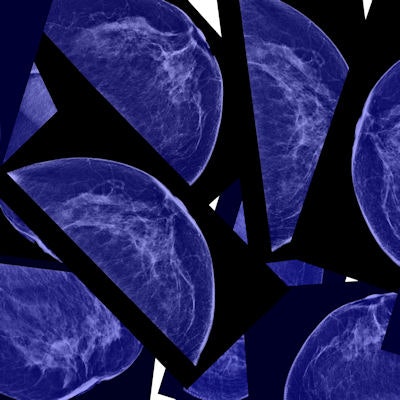
Studies have shown that using digital breast tomosynthesis (DBT) for breast cancer screening reduces recall rates and increases the detection of invasive cancers. But it also offers benefits in the diagnostic setting, such as helping breast imagers categorize lesions more accurately, according to a new study published in the October issue of Radiology.
 Dr. Madhavi Raghu of Yale University.
Dr. Madhavi Raghu of Yale University.
"After we adopted tomosynthesis, we began to notice that its benefits were spilling over from our screening program into the diagnostic setting," Raghu told AuntMinnie.com. "We were classifying fewer lesions as BI-RADS 3, or 'probably benign' -- a category which requires significant follow-up -- and therefore sparing our patients unnecessary imaging."
Better diagnosis
The researchers reviewed all diagnostic mammograms acquired over a 12-month period before Yale implemented tomosynthesis (2010 to 2011) and for three consecutive years afterward (2012 through 2014). They compared the rates of BI-RADS assessments 1 through 5 between the conventional and 3D mammography cohorts, as well as positive predictive values after biopsy (PPV3) for BI-RADS 4 and 5 cases (Radiology, October 2016, Vol. 281:1, pp. 54-61).
The group found that tomosynthesis clarified lesion categorization, increasing the number of cases reported as BI-RADS 1 or 2 (negative or benign) and reducing the number of BI-RADS 3 cases; these results were statistically significant (women with lesions classified as BI-RADS 3 usually undergo follow-up imaging at six, 12, and 24 months).
| Changes in BI-RADS after implementation of tomosynthesis | ||
| 2D mammography | 3D mammography (at year 3) | |
| Cases categorized as BI-RADS 1 or 2 | 58.7% | 75.8% |
| Cases categorized as BI-RADS 3 | 33.3% | 16.4% |
Although the rates of cases categorized as BI-RADS 4 or 5 did not change significantly with tomosynthesis, the positive predictive value after biopsy improved by almost 70%, from 29.6% with 2D mammography to 50% with tomosynthesis.
"The PPV3 in our study increased, without a notable change in the proportion of biopsy recommendations, thereby reducing the false-positive rate associated with breast biopsies," Raghu and colleagues wrote.
Just do it
As tomosynthesis continues to be implemented in practices across the country, the rates of BI-RADS final assessment categories and cancer diagnosis rates are likely to shift, according to the group.
"As a result, tomosynthesis may prove to have a profound effect on the criteria, benchmarks, and outcomes that have been established for conventional 2D mammography," the researchers wrote.
The study findings suggest that practices would do well to start using tomosynthesis for diagnostic mammography in addition to screening, according to Raghu.
"There are definite downstream benefits to using tomosynthesis in the diagnostic setting -- it can really change your practice," she said. "And when we improve our diagnostic confidence, we do better by our patients."




















